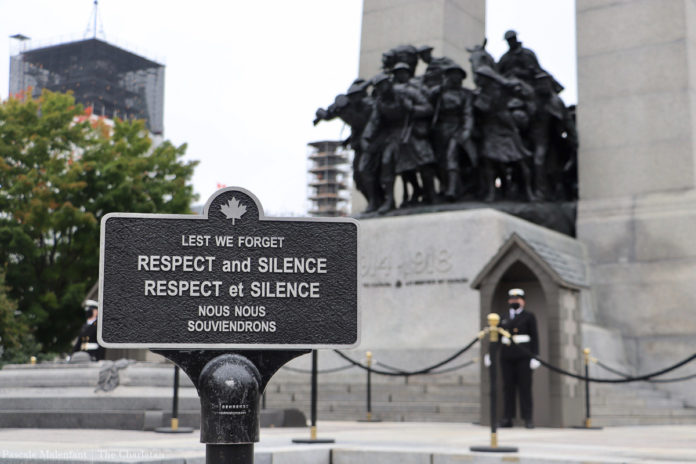
While they may seem controversial to some, Canada’s remembrance traditions are imperative to ensuring national unity and remembering those who sacrificed to build modern Canada.
I recently had a conversation with a soft-spoken, endlessly polite family friend who will turn 100 years old this October. Mrs. Yetman and I sat outdoors on a sweltering summer afternoon in the cool shade provided by a patio umbrella to discuss her memories of the Second World War.
Following that conversation, one story of harrowing heroism stayed with me. On June 6, 1944, Mrs. Yetman’s husband, then part of the 3rd Canadian Infantry Division, landed on Juno beach and charged into a shrieking hailstorm of machine gun bullets, an event now known as D-Day.
Mrs. Yetman’s husband survived the war and returned home to his relieved family. His story of personal sacrifice is particularly relevant now, as the 75th anniversary of Japan’s formal surrender to the Allies was just days ago on Aug. 15.
This anniversary marks the official conclusion of the Second World War. The occasion has reignited debate over whether Canada’s tradition of war remembrance, particularly those practiced at our annual Remembrance Day ceremonies, are exclusionary or glorify war.
Let me be clear: this perspective is a fundamental inversion of the truth. Canada’s remembrance traditions reinforce national unity and rightly honour the gargantuan sacrifices Canadians made, and continue to make, during wartime.
Groups of people bond through common formative experiences, which are often based in hardship. This is why family members come together to support each other when a loved one passes, why communities rebuild together after a natural disaster, and why soldiers serving alongside one another are often called “brothers in arms.”
This principle is no different for a nation at war, and is reflected in Canada’s traditions of remembrance.
Wearing a poppy, partaking in a moment of silence, pausing to reflect during the playing of “The Last Post”—these traditions, to name a few, are deliberately unspecific. Historic divisions between the English and French, settlers and Indigenous peoples, and the West and East, are not the main focus. These traditions recognize that despite any domestic differences, those who served in wartime made a sacrifice of collective, national significance. In doing so, Canada’s remembrance traditions reinforce national unity forged through the common hardship of war.
It might seem obvious, but it is not said enough that our country is the way it is because of the sacrifices of Canadians. Every building is constructed at the expense of the sweat of labourers. Every school is run with the patience of teachers, and every war is won by the blood of Armed Forces members. Sacrifice is ubiquitous to Canada’s national character.
Canada’s remembrance traditions honour those intergenerational sacrifices made during wartime for the betterment of the country. When a wreath is laid to commemorate the Canadian victory at Vimy Ridge, it is not simply a tribute to those Canadians that were wounded or killed during the battle. This act also recognizes their sacrifice precipitated the end of the First World War. That is worth honouring.
Mrs. Yetman and her husband went on to have 10 children, raising their family with the same principles of unity and sacrifice her husband exemplified on the hallowed grounds of northwestern France nearly 80 years ago. Canada’s remembrance traditions are ultimately a sign of a nation grateful for the Yetmans, and the millions of Canadians like them who gave so much in service to Canada.
The next time you encounter veterans selling poppies or participating in a parade, remind yourself of what they did and why we honour them. If you do, you will understand why Canada’s remembrance traditions are worth fighting for.
Featured image by Pascale Malenfant.




